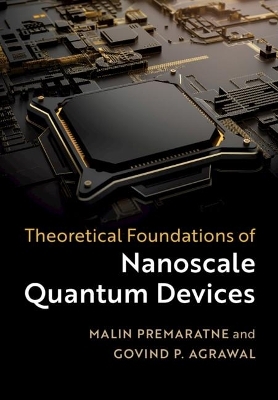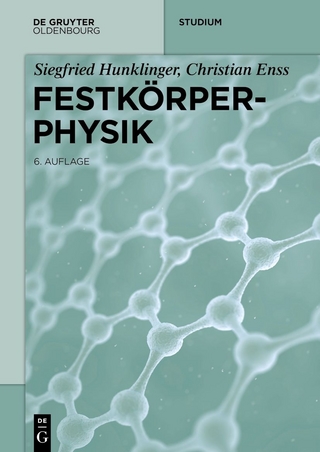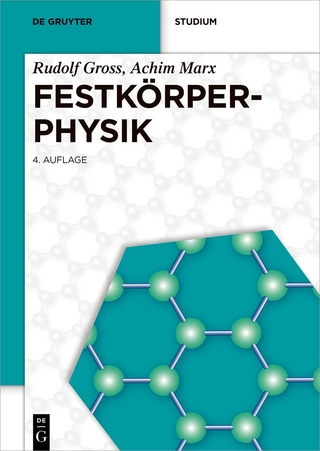
Theoretical Foundations of Nanoscale Quantum Devices
Cambridge University Press (Verlag)
978-1-108-47566-2 (ISBN)
Nanooptics which describes the interaction of light with matter at the nanoscale, is a topic of great fundamental interest to physicists and engineers and allows the direct observation of quantum mechanical phenomena in action. This self-contained and extensively referenced text describes the underlying theory behind nanodevices operating in the quantum regime for use both in advanced courses and as a reference for researchers in physics, chemistry, electrical engineering, and materials science. Presenting an extensive theoretical toolset for design and analysis of nanodevices, the authors demonstrate the art of developing approximate quantum models of real nanodevices. The rudimentary mathematical knowledge required to master the material is carefully introduced, with detailed derivations and frequent worked examples allowing readers to gain a thorough understanding of the material. More advanced applications are gradually introduced alongside analytical approximations and simplifying assumptions often used to make such problems tractable while representative of the observed features.
Malin Premaratne is Vice President of the Academic Board of Monash University, Australia. He is a Fellow of the Optical Society of America and a Fellow of the Institute of Engineers, Australia. His Industrial experience includes consultancy roles for Cisco, Lucent Technologies, Ericsson, Siemens, VPISystems, Telcordia Technologies, Ciena, and Tellium. He is also a visiting researcher at the Jet Propulsion Laboratory at Caltech, the University of Oxford, and the University of Melbourne. He has served as Associate Editor for IEEE Photonics Technology Letters, IEEE Photonics Journal, and OSA Advances in Optics and Photonics Journal. Govind P. Agrawal is James C. Wyant Professor of Optics at the University of Rochester. He is a Fellow of the IEEE and the Optical Society of America, and a Life Fellow of the Optical Society of India. He has been awarded the IEEE Photonics Society Quantum Electronics Award, the Riker University Award for Excellence in Graduate Teaching, the Esther Hoffman Beller Medal, the Max Born Award of the Optical Society, and the Quantum Electronics Prize of the European Physical Society. He has also served as Editor-in-Chief for the OSA journal Advances in Optics and Photonics.
1. Introduction
2. Quantum-mechanical framework
3. Linear response theory
4. Dissipation and decoherence
5. Quantum current flow
6. Quantum tunneling
7. Quantum noise.
| Erscheinungsdatum | 15.01.2021 |
|---|---|
| Zusatzinfo | Worked examples or Exercises |
| Verlagsort | Cambridge |
| Sprache | englisch |
| Maße | 182 x 260 mm |
| Gewicht | 700 g |
| Themenwelt | Naturwissenschaften ► Physik / Astronomie ► Festkörperphysik |
| Naturwissenschaften ► Physik / Astronomie ► Optik | |
| Technik | |
| ISBN-10 | 1-108-47566-3 / 1108475663 |
| ISBN-13 | 978-1-108-47566-2 / 9781108475662 |
| Zustand | Neuware |
| Haben Sie eine Frage zum Produkt? |
aus dem Bereich


